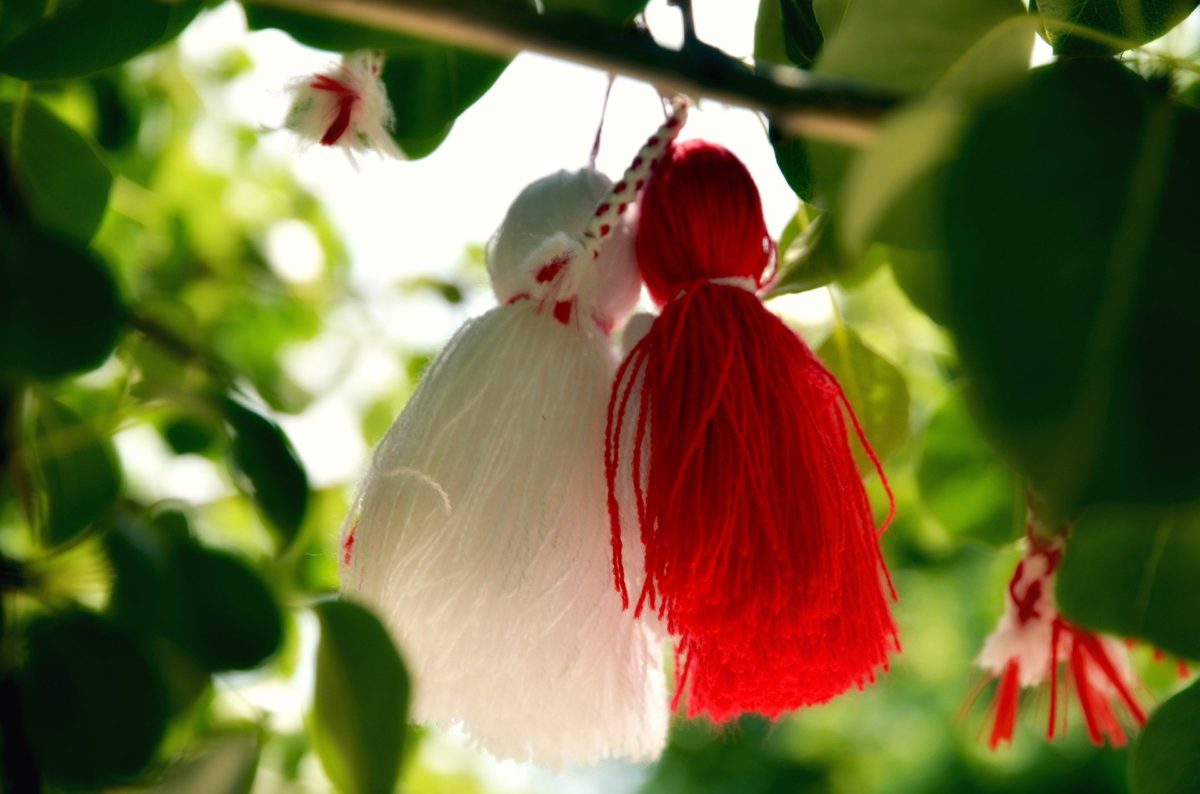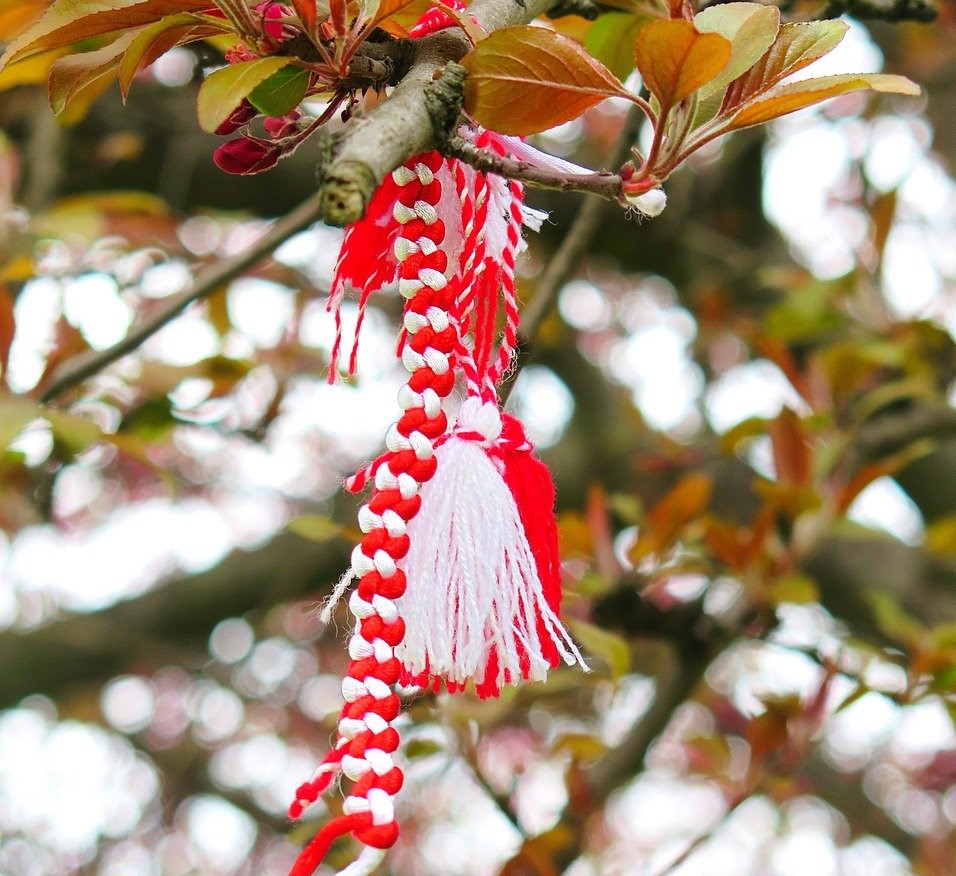It’s the first of March, and if you’re Bulgarian, you know what that means. If you’re not, let me give you a clue – it’s Baba Marta (Granny March)! And not only is it a special day, there’s also a ritual associated with it. You see, on this day, you exchange martenitsi with your friends, family, and everyone around you. And what are the martenitsi, you ask?
Here’s how one looks like:
But you can expect to see anything from wristbands, small yarn dolls to or tassels. But what they all have in common is the yarn threads, colored white and red and twisted together. If you see a marteniza with two little characters, those are Pizho and Penda. The martenizas are worn all throughout the month of March, or until you see a stork or swallow. You can then take it off and put it on a blooming tree. This is the reason so many trees in Bulgaria look like this:
You’re probably wondering how this tradition came about. Well, we are too. It’s not entirely certain how it originated, but there are many legends. This is one of the oldest continuing traditions in Christian Europe, and it’s purely pagan in origin.
And who is Granny March, anyways? As the story goes, she is believed to be a feisty lady who chases away her brother February and makes room for warmer weather. When she does her pre-spring cleaning and shakes her mattress for the last time this winter – all the feathers that come out of it pour on Earth like snow, and this is the last snow of the year.
These are just some of the legends, but if you’re curious, you can find many more. Check out this link for more info, as well as this one. There, you can also read one legend that links the marteniza with the founding of Bulgaria in 681 AD.
So, Честита Баба Марта, and I wish you health and happines with a virtual marteniza!
 This article was written by Detelina, volunteer at Sunrise Project France since April 2020. She is a Bulgarian citizen and likes to learn, write, cook and meet new people.
This article was written by Detelina, volunteer at Sunrise Project France since April 2020. She is a Bulgarian citizen and likes to learn, write, cook and meet new people.





Recent Comments